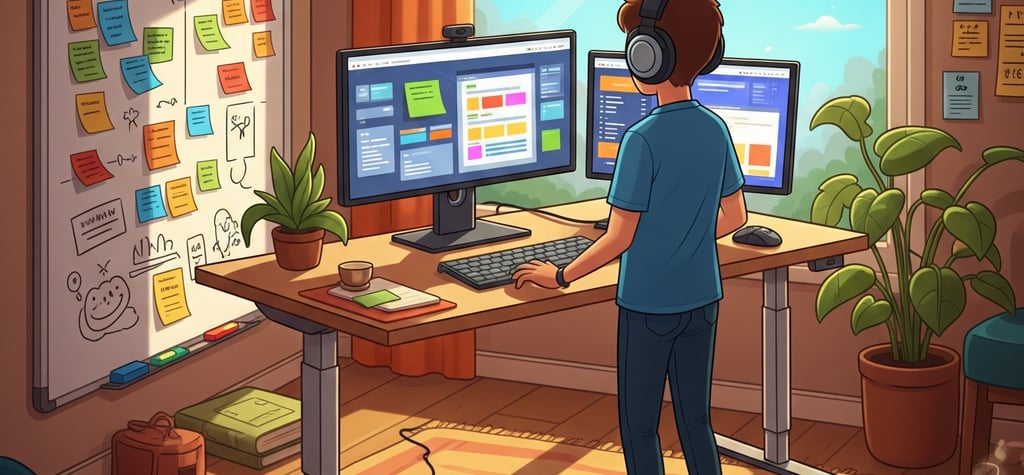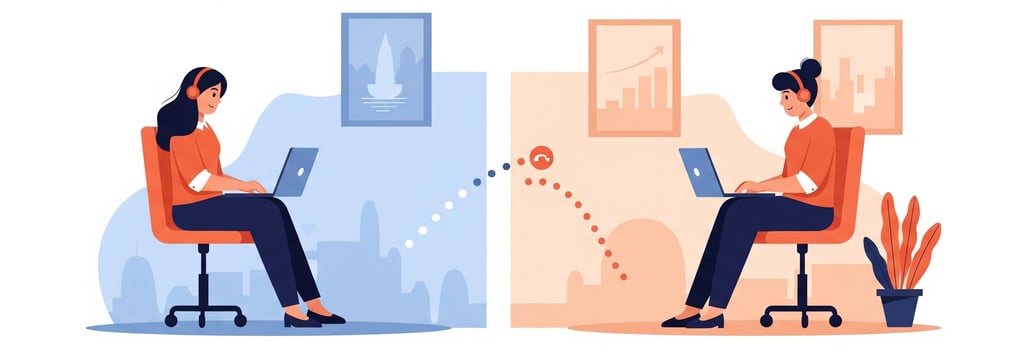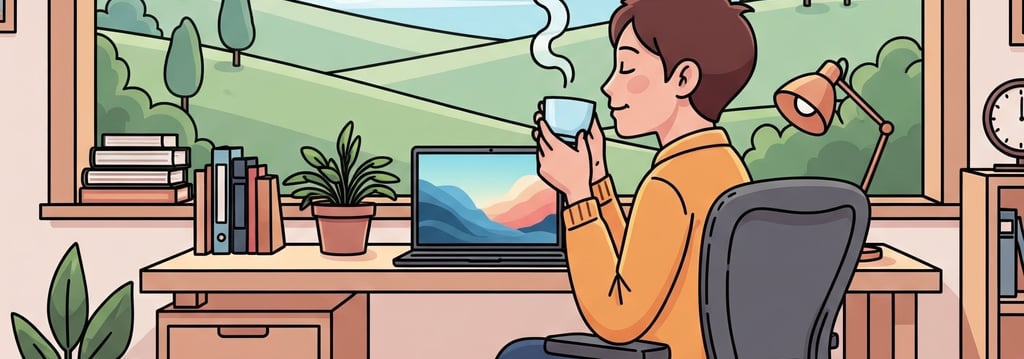The ADHD Guide to Remote Work: Focus Hacks That Actually Work
Discover ADHD-friendly strategies to stay focused, structured, and productive while working remotely—without someone watching over your shoulder. This guide blends lived experience with expert-backed tools to help you thrive on your terms.
Ron Souers
8/4/20255 min read
My post content
Working from home with ADHD is like being given a spaceship… without the manual.
It sounds impressive—until you’re floating in distraction space, forgetting why you even opened your laptop. But when you ditch the office, you also ditch the structure—no time cues. No accountability. Just you, your couch, and a to-do list that suddenly feels optional. While this is undoubtedly true, working from home gives you more flexibility and control over your environment and how that is created, which can be empowering if you know how to work with your brain instead of against it.
In this article, we’ll walk through how to stay productive while working remotely with ADHD by understanding the benefits of remote work, the challenges it creates, and the tools that help you stay focused and structured without someone breathing down your neck.
Let’s start with the good news—why remote work can be better.
Why Remote Work Can Be a Breakthrough for ADHD Minds
For those of us with ADHD, a traditional office can feel like a battleground of sensory assault.
Many neurodivergents found that the pandemic provided an opportunity to control noise, lighting, and interruptions at home, which can drastically reduce overstimulation. You’re not dealing with open-office distractions, commute fatigue, or that co-worker who always needs to talk just when you get into the groove. According to The Guardian, many neurodivergent people thrive in remote settings because they get to create an environment that works for them.
“People who disclose mental illness or other invisible disabilities such as autism often experience stigma after disclosure,” says Simon Bury, a postdoctoral research student at the Olga Tennison Autism Research Center at LaTrobe University in Melbourne, Australia. “This has led to reports of being overlooked for promotions, being discriminated against in task allocation that could lead to promotion, or simply being fired.”
No fear of being micromanaged, misjudged, or passed over—because you’re finally the one in charge. Some of the things that you have the freedom to do are:
You can set your schedule.
You can set alarms and listen to your favorite music.
You don’t have to wait in traffic.
You have more time with your pets.
But let’s be honest—freedom without structure can quickly turn into chaos.
But Without Structure, Freedom Can Fall Apart
Without meetings, clocks, or coworkers walking by, it’s easy to drift into distraction or time blindness.
ADHD makes time feel slippery. It slips away without you realizing it—until it’s 3 PM and you’ve replied to exactly zero emails. Without external cues, we can hyperfocus on the wrong task or not start anything at all. A Forbes article on neurodivergent workers notes that remote work often magnifies executive dysfunction— this could be difficulty with task initiation, sustaining attention, and switching between priorities.
I know that while writing this article and doing the research, it was incredibly daunting, especially since it took me a little while to find the right motivation or interest in that task. According to an MIT Sloan Management Review, the lack of routine can increase stress and reduce performance without intentional systems being in place.
Fortunately, building those systems doesn’t require perfection—it just needs a plan that fits you.
Build a System That Works for Your Brain (Not Against It)
Your brain needs anchors, not rigid schedules.
Start simple. A 3-step morning ritual—coffee, to-do list, headphones—can flip your brain into work mode without a fight. Now that you are working, you can take advantage of tools like Pomodoro timers (25-min work blocks + 5-min breaks), noise-canceling headphones, and a “do not disturb” note on your office door for roommates to reduce distractions, which are just some of the things to consider. According to the Edge Foundation, ADHD workers do better when their space is physically and mentally defined—meaning they don’t work from bed, and try to keep their desk clear of non-work items.
It’s about developing a routine that fits your style of thinking. Not every brain is created the same. So, it’s about structuring your day to include intense periods of work focus followed by good breaks. Working in sync with your brain’s natural 90-minute focus cycles isn’t a luxury—it’s a performance strategy. Backed by research from Dr. Axe, a sleep expert, and a Florida State University report, short, frequent breaks help prevent burnout, sharpen focus, and sustain peak productivity.
Whether that is focusing on one task per day until it is done and then moving on, or having a short list of three or four tasks that let your brain shift gears without losing momentum. The most important thing is to remember to work for about an hour and then take a 10-15 minute break to optimize productivity. When you implement this strategy, it has been shown to get more work done in just a few hours than in an entire 8-hour day.
Still, one of the most effective focus hacks doesn’t even require you to work harder—it just involves having someone else there.
The ADHD Productivity Hack That Feels Like a Cheat Code
Just having another person present—virtually or in person—can help you stay on task.
Body doubling is a new productivity tool that involves working alongside somebody (either virtually or in person) to complete tasks such as homework or housework. Anyone can act as a body double, such as a coworker or a friend, because having someone else present has been shown to help with focus. Apps like Focusmate, which is free to join, offer a variety of options from 20, 50, to 75-minute sessions to tackle anything from chores to bigger projects; this approach can make a huge difference.
Verywell Health explains that it reduces overwhelm, especially when starting tedious or complex tasks. And according to Wired, more workplaces are beginning to integrate body doubling into remote team workflows. Just knowing that someone else is there gives you a sense of motivation, just like going to the gym with a trainer or friend. So just because you are working for yourself doesn’t mean that you have to do it alone.
Now, it’s time to tie all of this together and talk about how you can use these ideas starting today.
Chart Your Course (and Make It ADHD-Friendly)
Working remotely doesn’t have to mean working alone or in chaos.
Remote work offers freedom and flexibility, which can be a massive gift to ADHDers—but only if you put the right systems in place. With structure, accountability, and intention, you can thrive without someone watching over your shoulder.
So set your course, adjust your sails, and don’t wait for permission—this is your boat now. Like with most things worth pursuing in this life, it takes time and adjustments.
Ready to take back control of your workday? Try one strategy from this article today—and DM me on TikTok: @Ron.Solo1 to tell me how it went. Let’s build better systems together.










Support
A guide for neurodivergent workplace challenges.
Resources
Community
RonSouers@dadhdwss.com
© 2025. All rights reserved.
